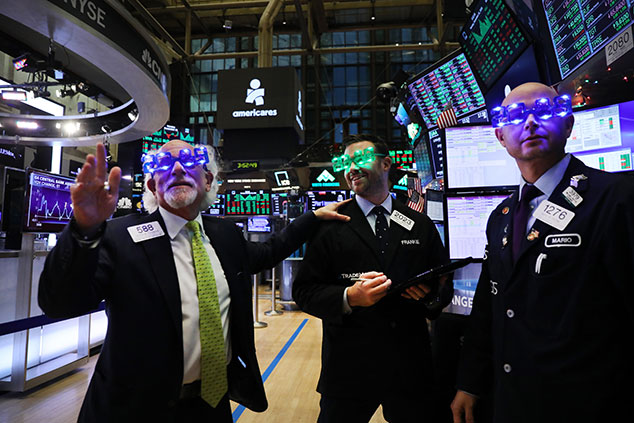
This article is taken from our FREE daily investment email Money Morning.
Every day, MoneyWeek’s executive editor John Stepek and guest contributors explain how current economic and political developments are affecting the markets and your wealth, and give you pointers on how you can profit.
US stocks leaped on Friday. The S&P 500 gained more than 3%, while the Nasdaq jumped by more than 4%.
Bond yields fell, oil prices gained. All in all, it was a thoroughly “risk-on” day.
So, is that it for the bear market?
An absolutely stonking jobs report from America
On Friday, after a pretty grim Christmas period, stock markets were hit by a wave of good news.
The most obvious plus point was the US employment report. Traders appear to have got it into their heads that the US is facing a recession any day now.
The non-farm payrolls report for December made that view hard to maintain. Employment might be a lagging indicator (ie, unemployment only starts to rise once the economy has already slowed down). But the sheer strength of the latest report suggests that any slowdown has to be some way off yet.
Employers took on another 312,000 staff last month. Markets had expected 177,000, so this blew expectations out of the water. Not only that, but the previous month’s figures were revised higher too.
Meanwhile, the proportion of people rejoining the workforce was up. And wages rose at their highest annual rate since 2009, climbing 3.2%. In short, it was a strong report and unlike most economic data releases, you really couldn’t pick any holes in it.
Normally, this would make for an interesting dilemma for markets. A report like this makes the Fed more likely to raise interest rates. However, two factors offset this. First, traders had become more scared of recession than of the Fed. So, this report helped ease their minds.
Second, Jerome Powell then gave a speech indicating that the Fed was aware that the market was a bit jittery, and that they would be “patient” in 2019. He did also make it clear that if the Fed needed to change its approach to quantitative tightening (QT), then it would.
So, you get a stronger economy at the same time as the Fed is showing its cuddlier side. Investors really couldn’t have hoped for a better combination of events.
Rising wages and the recent slide in the oil price (although it will rebound if “risk-on” continues) spell good news for consumption too. If ordinary Americans have more disposable income, they’ll spend it.
China is starting to pump out money again
However, it’s not all about the US. It’s China too.
The other reason – perhaps the main reason – for investors getting a fit of the jitters last year was evidence of slowing growth in China. Retail spending growth has slumped. And the manufacturing sector shrunk for the first time since 2016 last month.
For evidence of the impact on markets, you need look no further than the collapse of the Australian dollar, which is a play on the Chinese economy.
On that front, there have been a few recent points to cheer markets. Firstly, as trade talks begin, both the US and China have been making optimistic comments about their prospects.
More importantly though, China appears to be stimulating its economy again. The country has been trying to defuse the timebomb in its financial system. But that’s a tricky process – if you tighten monetary policy (which is what this involves), then you can’t help but slow growth.
So, now China is going back to what it always used to do when slower growth threatened – it’s spending more money on railway lines. As the FT reports, China has approved more than $125bn-worth of rail projects in the past month. Meanwhile, bank reserve requirements were also cut on Friday – in other words, monetary policy was relaxed.
In short, China is loosening the purse strings again. And in the US, the Fed is figuring out how to stay just far enough behind the curve so that everyone is happy. That’s about as close to a “Goldilocks” scenario (not too hot, not too cold) as markets could hope for in 2019.
What does this mean for your portfolio?
Is this the turning point? A lot of it depends on that Goldilocks outcome still looking likely. Will China keep loosening? Will the Fed continue to speak in a soothing manner? But it certainly could be. So what does that mean for your money?
Well, just as I was saying during the crash period, it doesn’t mean an awful lot. If you have a plan, you should stick to it. There’s no more need to change your strategy now that markets are going up, than there was to change it when markets were going down. You can lose money buy being too eager to buy when markets pick up, just as you can lose it by being too hasty to sell when they fall.
Keep sticking with assets that look good value. Keep holding on to a bit of gold (if the Fed strays too far behind the curve, it will be very good for gold). Maintain your watchlist with buying targets – and if you don’t already have one, then now is a good time to start doing your research, while the overall tone is less panic-inducing.